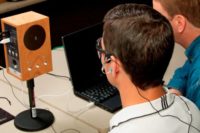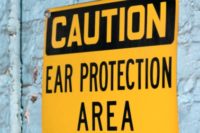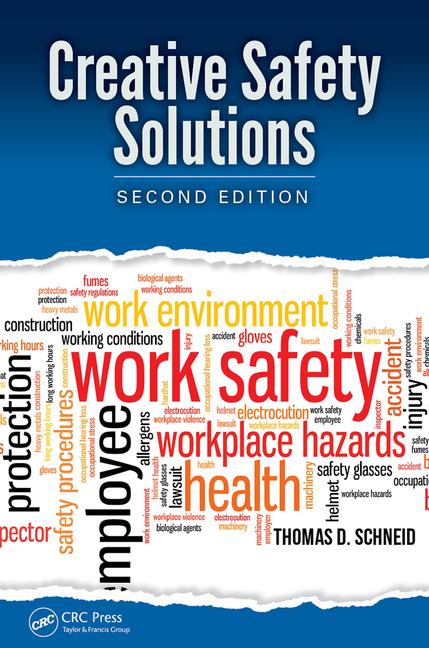According to the U.S. Bureau of Labor Statistics, occupational hearing loss is the most commonly recorded occupational illness in manufacturing. 3M is committed to reducing workplace exposure to hazardous noise with its E A Rfit Validation System, a quantitative hearing protector fit-test. The system features a new software upgrade, an expanded portfolio of probed earplugs for testing, and easy-to-use training materials.
“Wearing hearing protection is critical when working in metals, mining, construction, cement and other noisy environments,” said Jason Jones, Hearing, Head, Eye and Face marketing manager, 3M Occupational Health & Environmental Safety business. “However, hearing protectors must fit properly and provide adequate noise reduction for the specific work environment to safeguard against noise-induced hearing loss.”
The E-A-Rfit Validation System assists in achieving optimal fit through hearing protector selection and employee training. In less than 8 seconds per ear, the system generates a personal attenuation rating that indicates a worker’s noise reduction for a given fitting and hearing protector.
Unlike other systems that rely on subjective responses to test signals, the 3M in-the-ear testing procedure leverages proprietary algorithms to analyze sound levels in the ear when the earplugs are worn. This helps reduce test variability related to background noise in the test room and any existing hearing loss of the workers being tested.
A performance outcome screen then displays the personal attenuation rating along with a pass/fail indication for the worker’s noise exposure level. The system helps ensure proper use of the devices and identifies the earplug models offering the best protection, such as the popular 3M E-A-R Classic earplugs and easy-to-use, push-to-fit earplugs, such as E-A-R Push-Ins.
The E-A-Rfit Validation System from 3M includes all the hardware and accessories needed, including a speaker, software, stand, dual-element microphones, cables and a trial quantity of probed test plugs.
Related Statistics:
• According to the U.S. Bureau of Labor Statistics, occupational hearing loss is the most commonly recorded occupational illness in manufacturing (17,700 cases out of 59,100 cases), accounting for one out of every nine recordable illnesses. More than 72 percent of these occur among workers in manufacturing.
• In the United States, an estimated $242 million is spent annually on worker’s compensation for hearing loss disability. NIOSH recommends removing hazardous noise from the workplace whenever possible, and using hearing protectors in those situations where dangerous noise exposures have not yet been controlled or eliminated.
• OSHA sets legal limits on noise exposure in the workplace. These limits are based on a worker’s time-weighted average over an 8-hour day. With noise, OSHA’s permissible exposure limit is 90 decibels (dBA) for an 8-hour day. When workers’ noise exposure exceeds 90 dBA, hearing protection must be worn.
• Typical sound levels for conversation are in the range of 55-65 dBA; video arcades may reach 90 dBA; lawn mowers may be as high as 95 dBA; power saws range from 95 to 110 dBA; loud motorcycles often exceed 100 dBA; music at rock concerts or from car stereos can climb to between 120 and 140 dBA; and the blast of a hunting rifle can exceed 165 dB SPL.
About 3M
3M captures the spark of new ideas and transforms them into thousands of ingenious products. Our culture of creative collaboration inspires a never-ending stream of powerful technologies that makes life better. 3M is the innovation company that never stops inventing. With $30 billion in sales, 3M employs about 80,000 people worldwide and has operations in more than 65 countries. For more information, visit www.3M.com or follow @3MNews on Twitter.
About 3M Personal Protective Equipment (PPE) Safety Solutions
3M offers a comprehensive, diverse portfolio of Personal Protective Equipment (PPE) solutions providing respiratory protection, hearing protection, fall protection, reflective materials for high visibility, protective clothing, protective eyewear, head and face protection, welding helmets, and other adjacent products and solutions such as tactical safety equipment, detection, monitoring equipment, active communications equipment and compliance management. In 2012, 3M celebrates 40 years of safety leadership – recognizing the company’s respiratory and hearing protection solutions introduced in 1972. Visit www.3M.com/PPESafety.
For more information:
• E-A-Rfit Validation System graphic:
www.box.com/shared/7f99ac5e4f6e6dd3bf2b
• E-A-Rfit Validation System website:
e-a-rfit.com
• Are you at risk? Check out 3M’s noise thermometer:
www.box.com/s/0ae4767c63987f793a49
• To purchase 3M hearing protection products:
www.3M.com/hearing
3M helps prevent occupational hearing loss by accurately measuring the fit of hearing protectors
E A Rfit Validation System objectively tests noise-reduction of earplugs




